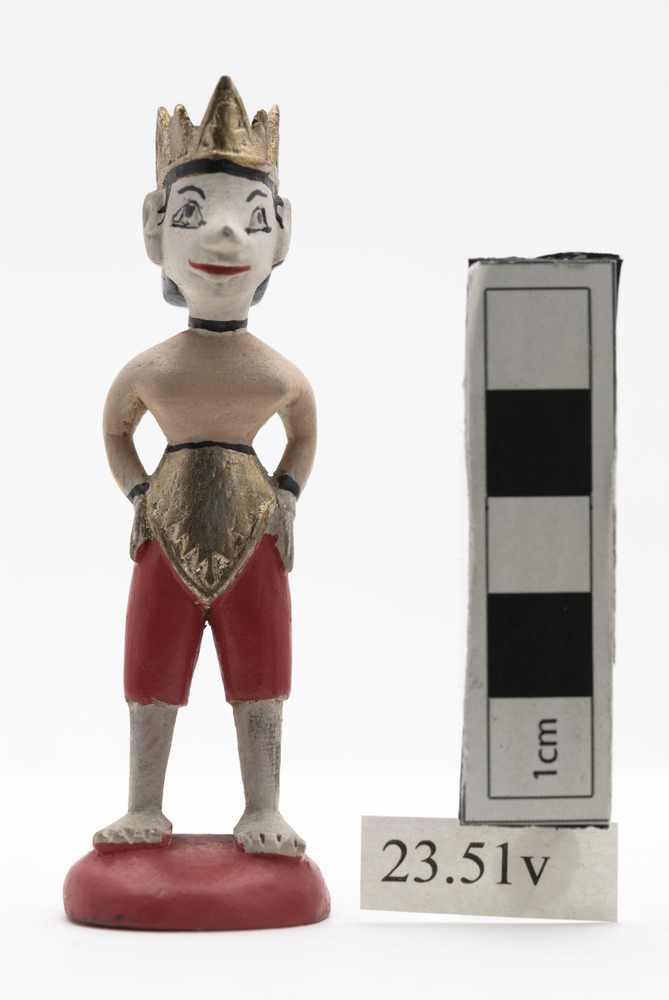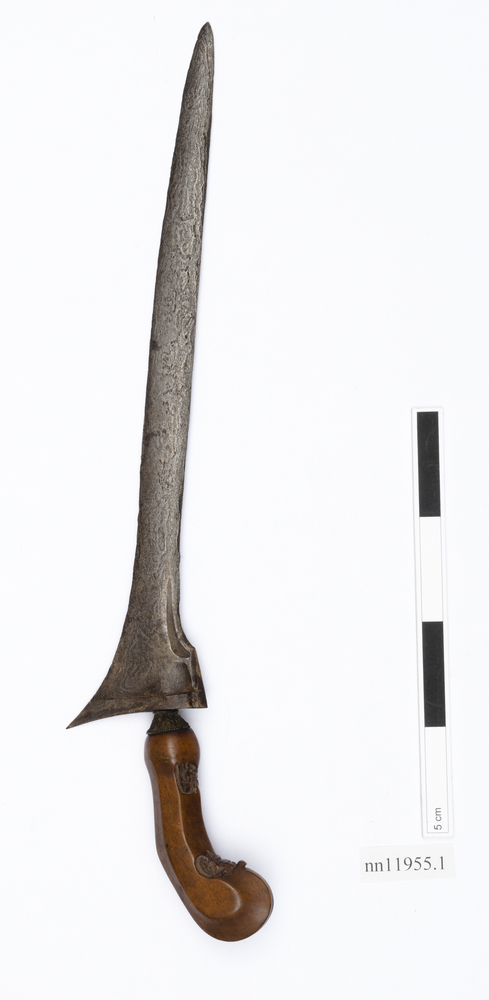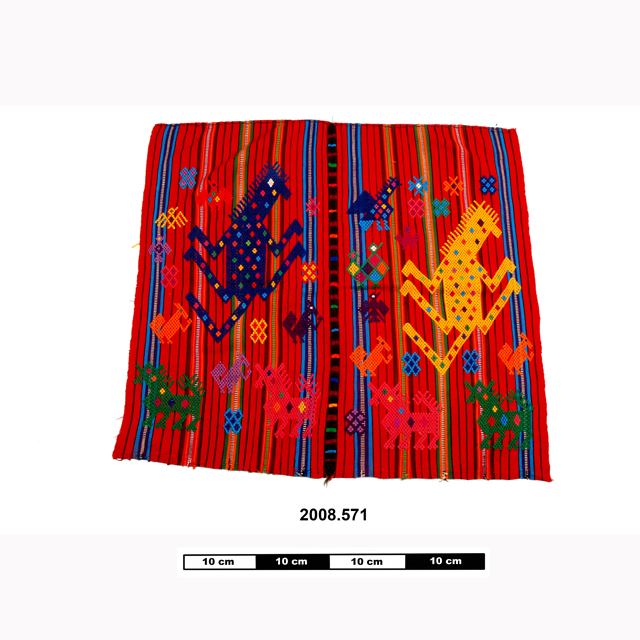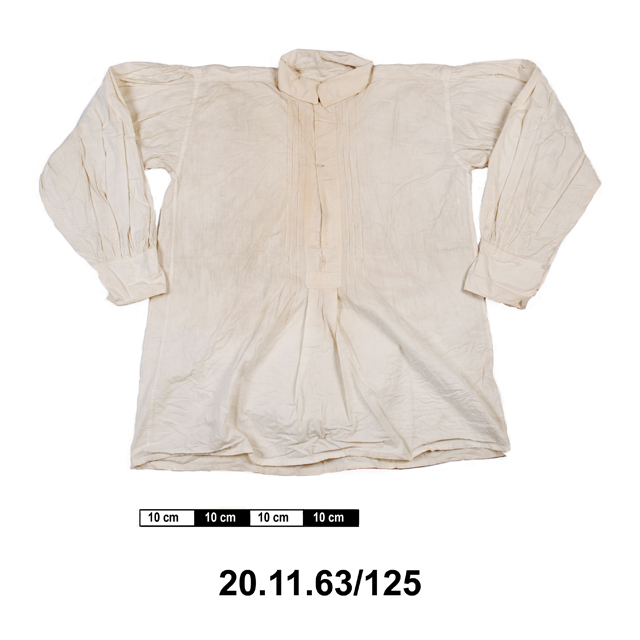
Man arrow. Arrow with bamboo shaft hafted to wooden head with vegetable fibre binding. Head is elaborately carved with design including an entire head and has shallow barbs. Bone tip and side barb attached with resinous substance.
Man-Arrow, Opop, Torres Strait Islands, Australia. Like their closely-related northern neighbours in the Papuan Gulf, the Torres Strait Islanders primarily relied on the bow and arrow in warfare. Their large bows (gagai uru) were traditionally cut from thick sections of bamboo with a string formed from a split strip of the same material. These were powerful bows and difficult to draw: the anthropologist A. C. Haddon estimated their maximum range was as much as 200 metres, although they were only accurate at a quarter of that distance. The arrows (kep) they fired were traditionally varied in form, because they were a major import into the archipelago from the New Guinea mainland. Remarkably, all arrows were imported into the islands from the North, and the cane used as arrow shafts, for example, grew only in New Guinea; the ultimate source of man arrows in the Papuan Gulf region of southern New Guinea remains unclear. Arrows were carried by the archer in an open bundle tied up and carried with a carrying strap (bata). Arrows were generally classified by the species of wood used to make the hardwood head. This opop 'man-arrow' is different, in being named because of its form. Hardwood, bamboo. Early 20th Century. Formerly in the collections of the Royal Botanic Gardens at Kew, and transferred with other ethnographic objects to the Horniman Museum in 1961.
fighting






